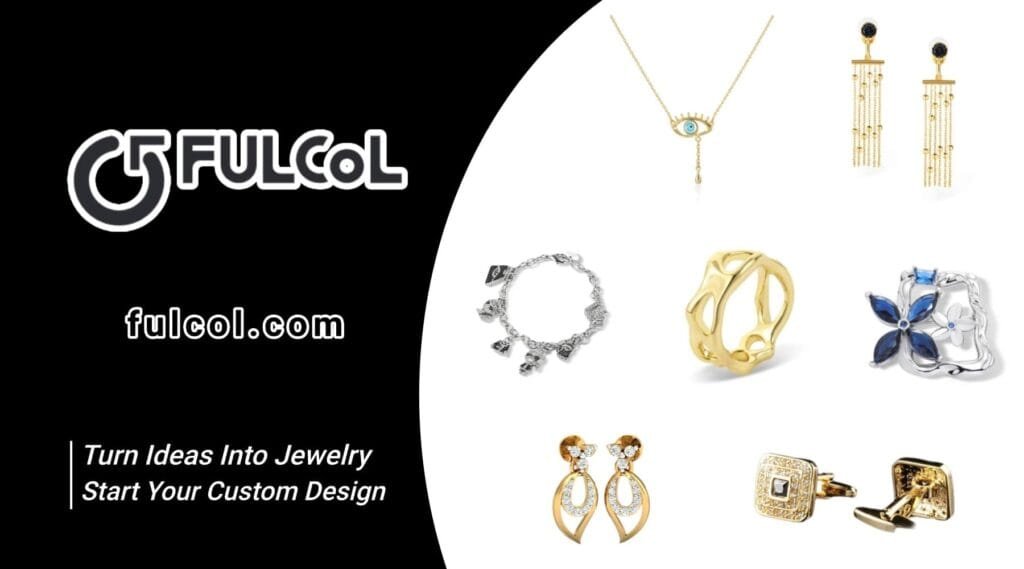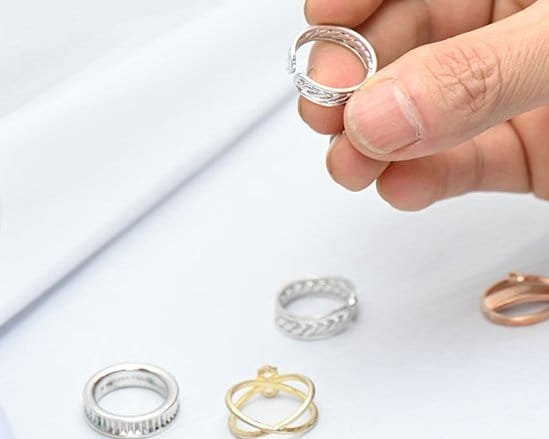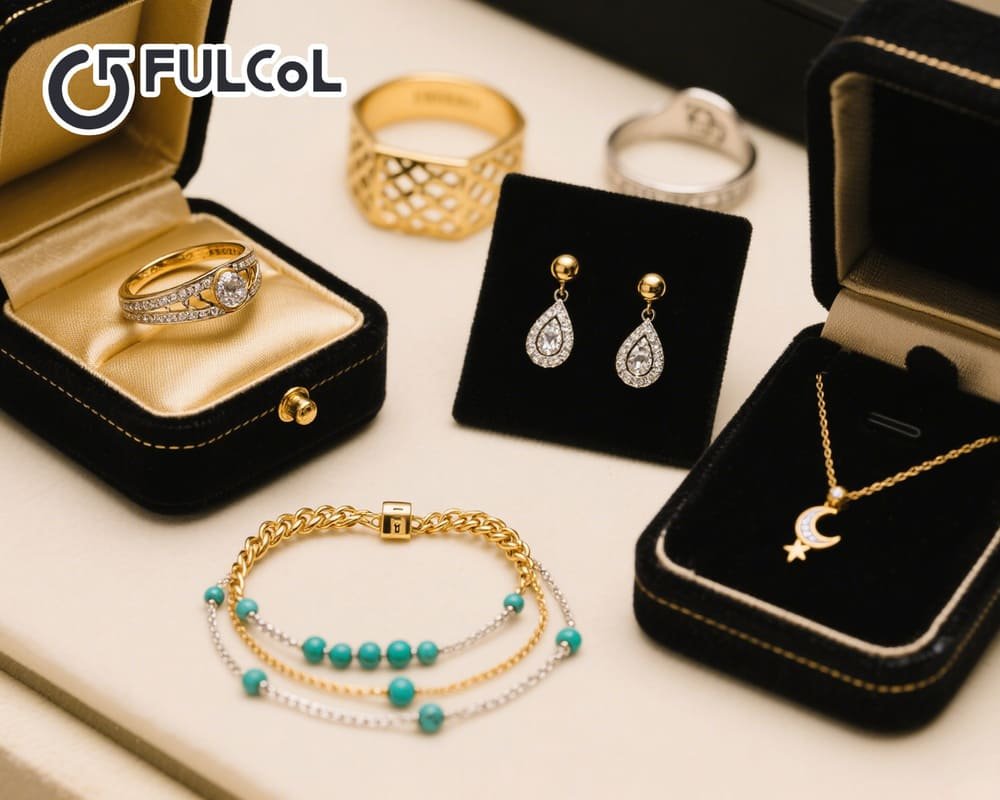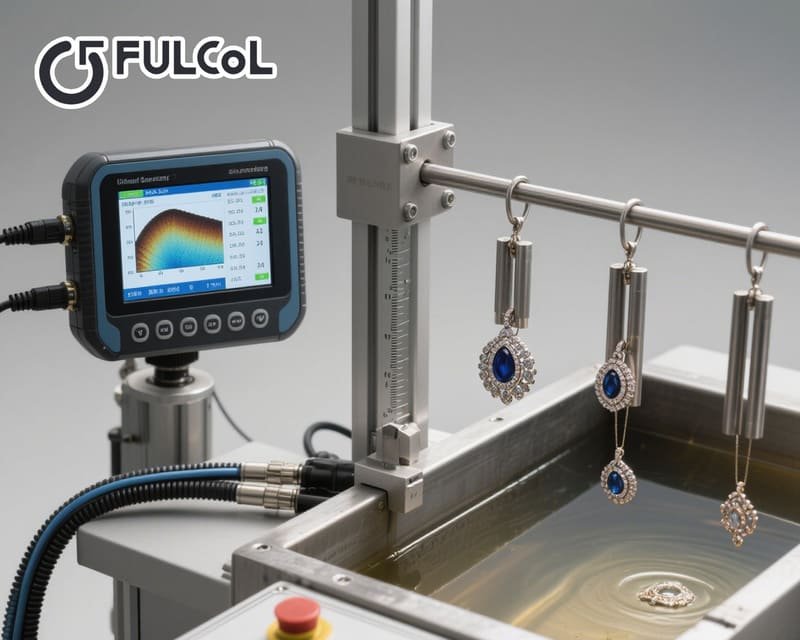In the current situation of increasingly fierce competition in the jewelry industry, the choice of materials not only determines the appearance and texture of jewelry, but also directly affects the market positioning, cost control and customer satisfaction of the product. As a fine jewelry wholesale and wholesale fashion jewelry manufacturer that has been deeply involved in the market for many years, Fulcol has always believed that high-quality raw materials are the cornerstone of creating high-quality jewelry and the key to winning customer trust and reputation. Whether it is classic precious metals, rich alloys, or dazzling gemstones and cutting-edge innovative materials, each material has its unique aesthetic charm and technical challenges.
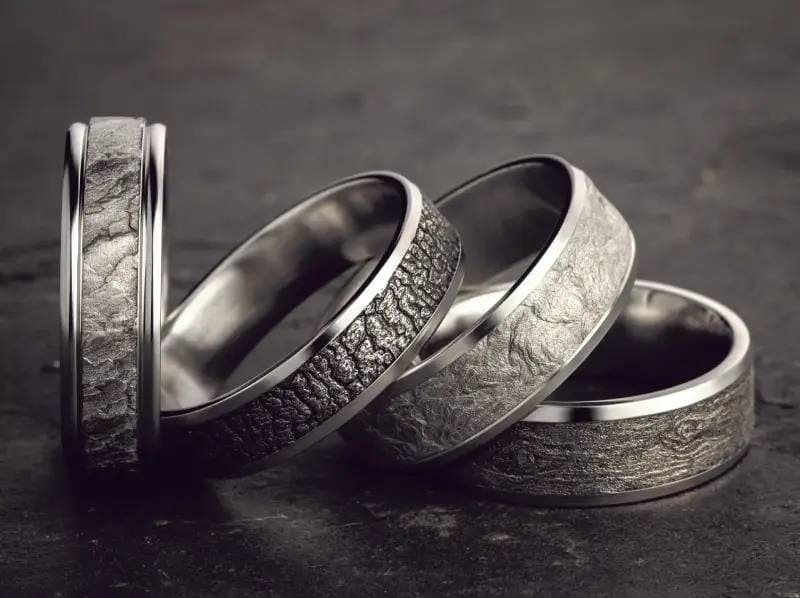
Overview of Common Jewelry Materials
In the thousands of years of jewelry development history, several major categories of basic materials have always dominated. They have become the first choice for most jewelry with their mature process system, stable supply chain, and aesthetic performance that is generally accepted by the market and consumers. Below, we will systematically outline these common materials from the two dimensions of metal and decoration.
K-gold (gold alloy)
K-gold is an alloy made by combining pure gold with other metals (such as copper, silver or palladium). Its greatest charm is that it retains the warm luster of gold while greatly improving its hardness and durability.
K gold with different proportions can present a classic golden color, or it can show the softness of rose gold or the texture of “white gold” that is almost silvery white by fine-tuning the metal ratio or surface electroplating. For rings and bracelets that need to withstand daily friction, K gold can effectively reduce scratches and deformation
For earrings and necklaces that pursue a fashionable appearance, moderate electroplating can also bring colorful and fashionable effects. In mass production, K gold has a stable supply and its cost is easier to control than pure gold, making it the first choice of many fashion jewelry brands.
Sterling Silver (S925)
Sterling silver jewelry is popular with the public for its natural and warm luster and affordable price. The “S925” logo means that the silver content reaches 92.5%, and the rest is other metals to increase toughness. When wearing sterling silver jewelry, you will feel its soft metallic touch and slightly cold feeling. This subtle change in touch is part of the unique charm of sterling silver.
Although sterling silver is prone to slight oxidation in the air, it can be restored to its new brightness by simply wiping it gently with a soft polishing cloth. For thin chains, earrings or bracelets worn daily, sterling silver can satisfy the exquisite beauty without bringing consumers too high a price threshold, especially suitable for entry-level fashion series and gift markets.
Platinum
Platinum is the most stable and non-allergenic member of the precious metal family, with a pure silvery-white luster. Although its cost is relatively high, platinum’s excellent durability and non-fading properties make it the first choice for wedding jewelry and heirlooms.
Wearing a platinum ring or necklace, you don’t have to worry about dulling the luster or metal allergies even after years. In addition, the high density of platinum makes it slightly more stable than K gold at the same volume, and this heavy feel is often regarded as a symbol of high-end quality. If you want to create a classic style that will accompany you for a lifetime, platinum is undoubtedly the best material.
Brass
Brass is composed of copper and zinc, showing a warm golden hue. It is highly flexible in processing. It can be quickly formed by die-casting, or it can be sandblasted, brushed or oxidized on the surface to meet the diverse design needs from retro to modern.
As a cost-friendly material, brass is very suitable for mass production and wholesale of fine jewelry. Although untreated brass will slightly oxidize and darken over time, this “natural patina” also adds a unique charm to the retro style and handmade art style. To keep it shiny for a long time, just add a layer of transparent protective paint or choose a light electroplating on the finished product to achieve both beauty and durability.
Titanium Alloy
Titanium alloy has become a new favorite of modern minimalist jewelry with its light and strong characteristics. Its color is close to silver-gray, but it is lighter than most metals and more resistant to sweat and seawater corrosion, making it very suitable for sports or outdoor jewelry styles.
Titanium alloy necklaces, bracelets and even rings can be weightless, and its own hardness also ensures that it is not easy to scratch. Through the anodizing process, titanium alloy can also present a variety of beautiful colors such as blue and purple, adding a sense of modern technology to the design. If you want to create a product line that is both fashionable and practical, titanium alloy will be a choice worth trying. .
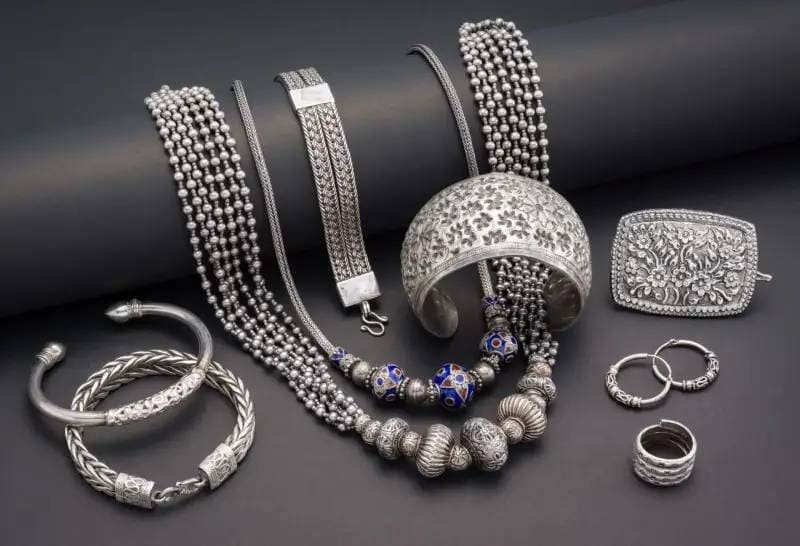
Decorative and special jewelry materials
Natural gemstones
Natural gemstones such as diamonds, rubies, sapphires, and emeralds give jewelry an irreplaceable vitality with their unique colors and inclusions. Each gemstone is finely cut to maximize the refraction and shine of light inside it. When wearing natural gemstone jewelry, you will be deeply attracted by the “jumping firelight”.
Although natural gemstones are more expensive, their rarity and cultural value often make them the first choice for important moments, such as weddings, anniversaries, or luxury customization. For the high-end market that pursues quality and emotional appeal, natural gemstones are still irreplaceable.
Synthetic gemstones
Synthetic gemstones are made in a laboratory environment through high temperature and high pressure or chemical vapor deposition. They are very close to natural gemstones in composition and refractive index, but can be batch controlled in color, clarity, and size. This controllability not only ensures stable quality, but also makes the price more affordable.
Synthetic gemstones such as moissanite and synthetic sapphire are increasingly used in mid-range fashion jewelry due to their stunning fire and high hardness, becoming the best alternative to entry-level luxury. For brands that want to balance cost and visual effects, synthetic gemstones are the secret weapon to achieve “grand but not bankrupt” design.
Pearls
The warm luster and soft roundness of pearls have always been loved by women. Saltwater pearls such as Akoya and South Sea pearls are known for their high reflectivity and roundness, while freshwater pearls have won the favor of more creative designers with their diverse shapes and rich colors. Pearl necklaces, pearl earrings or pearl pendants can all add a touch of classic elegance to the overall look.
In terms of maintenance, pearls prefer a mild environment: wipe them gently with a clean and soft cloth after wearing them, avoid chemicals and high temperatures to maintain their “soft jade-like luster”. The unique temperament of pearls makes it suitable for both the workplace and the gentle charm at dinner parties.
Advanced Ceramics
In recent years, high-performance ceramics have gained wide attention in the jewelry field. Zirconia ceramics have a mirror-like luster, but their scratch and wear resistance far exceeds that of ordinary metals, making them a new favorite in the fashion watch circle and trendy earrings. Ceramics are hard, but they are easy to clean due to their smooth and non-porous surface, and are not afraid of sweat or cosmetic residue.
Black and white are the most common choices. Some people also use color powder doping technology to make ceramics into various colors such as dark blue and graphite gray, providing young people with a unique and elegant texture.
Technological polymer composite materials
The addition of polymer materials such as carbon fiber and PEEK makes jewelry both light and strong. The unique texture and slight luster of carbon fiber add a sense of the future to the modern minimalist style.
PEEK resin’s high temperature resistance and chemical resistance allow jewelry to remain stable in extreme environments. Through lamination, CNC precision carving and vacuum coating processes, these materials can be combined with metals or gemstones to create cross-border works that are both technological and fashionable.
Sustainable Recycling and Bio-based Materials
With the awakening of environmental awareness, jewelry materials from recycled metals and bio-based resins are gradually coming into the public eye. Purifying and reusing precious metals from electronic waste not only reduces mining, but also brings the green label of “circular economy” to the brand.
Plant oil-based epoxy resin or PHA biodegradable fiber injects sustainable concepts into creative design, suitable for creating light and story-rich accessories. Choosing these materials can not only meet consumers’ expectations for environmental protection, but also inject deeper social responsibility values into the brand.
| Start Your Custom Order | Email: info@fulcol.com | Number: +86 13055603907 |
